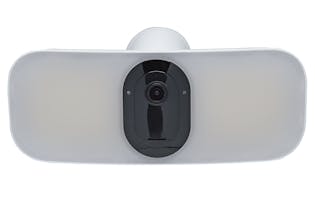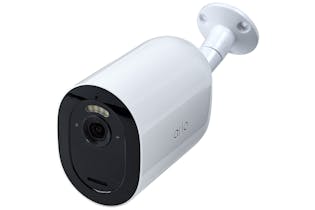Security cameras
Find the best security camera for your home with our buying guide and test results for 29 new and 15 discontinued models.
Professional security camera systems come at a hefty price. If your home security budget is limited, a DIY approach using wireless IP (internet protocol) cameras can provide peace of mind.
A downside is that these cameras aren’t likely to lower your home insurance premiums, as most insurers require a security system to be professionally installed and monitored.
How do they work?
IP cameras are the evolution of CCTV (closed-circuit television). Where CCTV is a closed network with cameras wired directly to monitors, IP cameras use your home WiFi network.
When the camera detects motion, it alerts you by email or a notification on your smartphone. You can view a live feed from an app on any Android or iOS device, and most also provide access through a website. You can remotely pan and tilt some cameras.
Wireless IP cameras can be bought individually or in a kit. One camera is enough if you need to monitor a single room or area, such as a car parked in the driveway. If you want to protect your whole home, make sure the kit you buy has enough cameras and sensors. There are usually multiple cameras, a control hub, window and door sensors and motion detectors.
Features to look for
- Indoor or outdoor — the main difference is that outdoor cameras have weatherproofing. Check the IP (ingress protection) rating of an outdoor camera to see how well it resists dust and water.
- Motion detection and alerts — when a camera detects movement, it sends an alert by email or push notification to your phone. You can usually set areas within the camera’s view you want to receive alerts from. This lets you cut down on false alarms by, for example, excluding curtains that often flap in the breeze.
- Resolution — high-definition cameras are the norm, with resolutions starting at 1280x720. The higher the resolution, the more detail you’ll be able to make out, such as facial features. As a consolation, lower resolution footage takes up less storage space.
- Pan and tilt — being able to change a camera’s viewing angle through the app by panning (horizontal) and tilting (vertical) allows greater flexibility.
- Night vision — nearly all cameras have night vision, meaning they can record in low light using infrared. Most cameras can’t see as far in the dark, and the picture is usually worse. A camera with a floodlight triggered by motion can minimise these limitations.
- Microphone and speaker — most cameras have a microphone so you can hear what’s going on in the video. Some include a speaker for dissuading would-be intruders (for example, you might be able to shout at them through your smartphone app).
- Adding more cameras — even if you don’t buy a kit, most cameras can be connected into a group. Check which cameras are compatible with which, but it’s usually easiest to stick with one brand.
Storage and ongoing costs
Most wireless cameras let you store your recordings locally on a microSD card, via a slot on the camera or hub. But the camera companies really expect to upload your video and photos to cloud storage – remote access to footage can’t work when it’s locked up on a physical drive.
Remote storage isn’t free, though, so if you’re regularly saving video to the cloud to review later, you might need to pay for the privilege. Be aware that when you buy a security camera, you’re likely signing up for a regular subscription cost as well. They can cost anywhere from $4.50/month for one device to $24/month for 4K video storage on several cameras.
Video doorbells
A popular subset of the security camera market is the smart doorbell. These cameras act like an intercom system, letting you see who’s at your front door and hold a two-way conversation with your visitor (or intruder).
If you already have doorbell wiring, you should wire your smart doorbell into that. If not, there are battery-powered ones too – but they take a bit longer to start recording once movement is detected.
Install and setup
Most of the time, all you need to install a wireless IP camera is a wireless router, a ladder and a drill.
- Most wireless IP cameras need mains power, so if you don’t have a power point near where you plan on mounting it, you’ll need one installed. Models that use batteries can be easily repositioned.
- Setting up remote access is easy. The camera will have instructions on how to connect it to your home WiFi. The connection process isn’t too technical – often it can be done with your smartphone.
- Cameras with cloud storage require you to sign up for an account, and most have ongoing subscription costs.
Tip: Try using the app and web access before you mount the camera. It’s much easier to fix problems when the camera isn’t two metres up the wall.
Security
Since you’re sending images of your home over the internet, it’s important to ensure everything is as secure as possible.
- Enable all security settings possible on the camera (and hub, if included). Check the manual or manufacturer’s website for instructions.
- Look for cameras that encrypt footage, which means transferred data is “coded” and can only be decrypted by devices that know the code.
- Make sure your home WiFi is protected, as well as any devices you use to view the live feed.
For more information on keeping your data and devices safe, check out our article about online privacy.

People's Choice
Our People's Choice awards are granted to brands that consistently rate above average for customer satisfaction and meet out other performance criteria. Become a member and see which brands have earned a People’s Choice award.
Which security cameras are most reliable?
We ask thousands of Consumer members about their products to find out which brands are most reliable and satisfying to own. The results are available to members and Digital Pass holders.
We've tested 44 security cameras.
Arlo

Arlo

